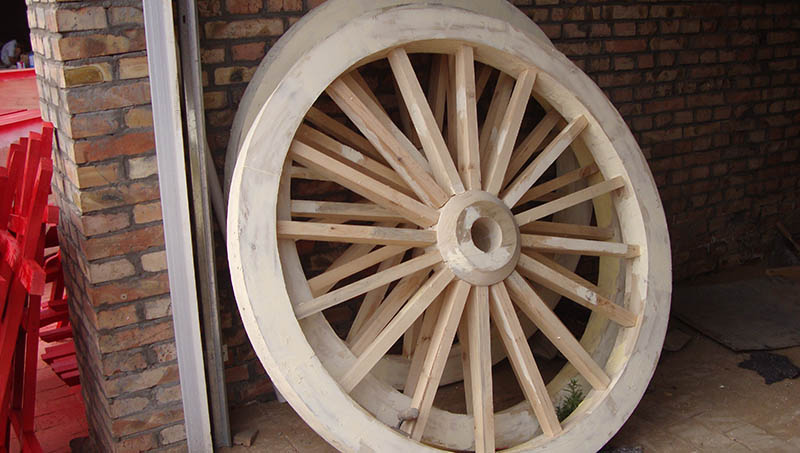Leleche is a mobile home for herders, and Lele herdsmen drove the cart and yelled at the animals. Lele cars are generally more than 4 meters long and can be covered with a hood. With a tent, it is often used as a chariot to carry the army's heavy loads during wartime.
Raw materials
Leleche usually uses birch trees commonly found on the grasslands as raw materials. These trees mostly grow in the mountainous areas of pastoral areas. Its structure is divided into two parts: the upper leg and the lower leg. The lower leg of the car is composed of wheels, axles, and front. The wheels of Mongolian cars are generally composed of six wooden rims. The rim is arc-shaped and connected as a wheel. The height of the wheel is 1.5 meters. Each car has two wheels. The axle center is forty-five centimeters long, the outer end is about 29 centimeters in diameter, and the inner end is about 32 centimeters in diameter. Shafts are generally made of elm and oak wood, each with a length of about 65 cm. Between the axle center and the rim, 36 spokes are arranged radially to support the wheels. There are fronts at both ends of the axle, and these parts constitute the lower legs of the car. The upper foot of the car is composed of a car shaft, a car support, and a car groove. The car shaft is more than four meters long, and eight to ten cross braces are allocated in the latter half of the period, and the shaft passes through the car trough of about 1.5 meters. Tie a braided rope-like wicker on the top of the cowl and wrap it on the cross wood hanging from the cow's neck. The shafts are short and reel, not easy to tip over, and can be managed well and adapted to the local mountain and gully terrain.
effect
Whether in ancient or modern times, the huge Lele convoy is composed of a dozen or even dozens of vehicles. The front is called "Many Huolun". In order to prevent the convoy from dispersing, the horns of each cow are made of rope. Associated, the car in the back has a big bell tied to it, so that the car in front can hear it. What's interesting is that only one person is driving the team, sometimes dozens of cars travel hundreds of miles. In order to avoid the scorching sun, most of the actions of the bullock cart begin before the sun is already in the west or before sunset, and travel until midnight, before sunrise the next day, and stop before noon. Generally speaking, the long journey of the convoy will last up to seven days, and the livestock will have one day to rest.



 Recommended
Recommended


